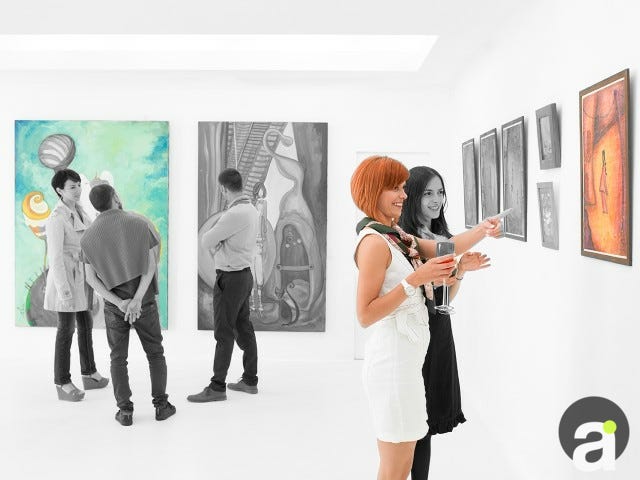Sustainable Futures in the Arts: Diversifying Revenue Streams for Art Institutions
For art institutions, the pursuit of mission has always been intertwined with the challenge of means. The traditional model is no longer enough to sustain most art institutions now and in the future.
Sustainable Futures in the Arts: Diversifying Revenue Streams for Art Institutions
This article provides you with:
A clear understanding of why moving beyond traditional funding models is critical for institutional resilience.
A breakdown of five key areas for revenue diversification: Earned Income, Digital & Content Strategy, Community-Centric Fundraising, Strategic Partnerships, and Endowment & Investment.
Actionable ideas and real-world examples for each revenue stream.
A mindset shift from “fundraising” to “resource generation” for long-term stability.
For art institutions, the pursuit of mission has always been intertwined with the challenge of means. The traditional model—relying heavily on ticket sales, blockbuster exhibitions, and a small pool of major donors—has proven to be fragile. Economic shifts, changing audience behaviors, and global events can swiftly turn a balanced budget into a deficit. The path to a sustainable future no longer lies in finding a single, perfect source of funding, but in thoughtfully building a diverse and resilient ecosystem of revenue streams.
This article explores practical strategies for art museums, galleries, and arts organizations to diversify their income, ensuring they can continue to serve their communities and fulfill their artistic missions for years to come.
1. Rethinking Earned Income: Beyond the Gift Shop
While ticket sales are a form of earned income, forward-thinking institutions are expanding this category far beyond the admissions desk. The goal is to create value-added experiences and products that feel like a natural extension of the institution’s brand.
Premium Experiences: Instead of just a general admission ticket, offer tiered options. A “Curator’s Tour” package could include after-hours access, a talk with a curator, and a glass of wine. Workshops led by practicing artists (e.g., a printmaking class tied to a current exhibition) can command higher prices than a standard ticket.
Intellectual Property (IP) Monetization: Your institution is a content powerhouse. License high-resolution images from your collection for use in publications, films, or commercial products. Develop online courses or certificate programs in partnership with universities, leveraging your expertise in art history, conservation, or arts management.
Venue Rental Reimagined: Your building is a valuable asset. Beyond traditional event rentals, consider niche markets. Offer your spaces as a unique photoshoot location for fashion brands or filmmakers. Create “co-working Mondays” for local creatives, providing a stimulating environment and a new revenue source on a typically slow day.
2. Embracing the Digital Landscape
The digital world is not just a marketing channel; it’s a viable revenue frontier. The key is to offer digital content that is unique, high-quality, and cannot be easily found elsewhere.
Virtual Membership and Digital-Only Content: Create a “Digital Member” tier that provides exclusive access to live-streamed artist talks, behind-the-scenes conservation videos, curated online collection tours, and a dedicated digital newsletter. This attracts a global audience who may never visit in person but are passionate about your work.
Paid Podcasts or Audio Tours: While free content builds audience, consider developing a premium, in-depth podcast series that delves into a specific part of your collection or a thematic art historical deep dive. Similarly, offer enhanced audio tours for a small fee via a dedicated app, featuring guest narrators like well-known artists or curators.
E-commerce with a Story: Transform your online store from a simple shop to a curated marketplace. Partner with artists and makers to create exclusive products inspired by your collection. Use product descriptions to tell the story of the art that inspired the item, creating a stronger emotional connection and justifying a premium price.
Attention! Museums, Galleries, Artists
arTag Smart Souvenirs are transforming the $39B Souvenir Industry with Smart AR+NFC Coins and opening new revenue streams for art institutions.
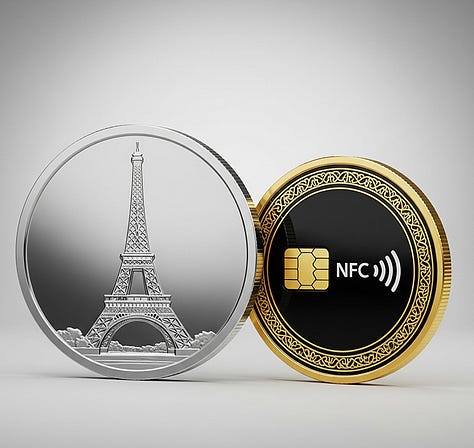
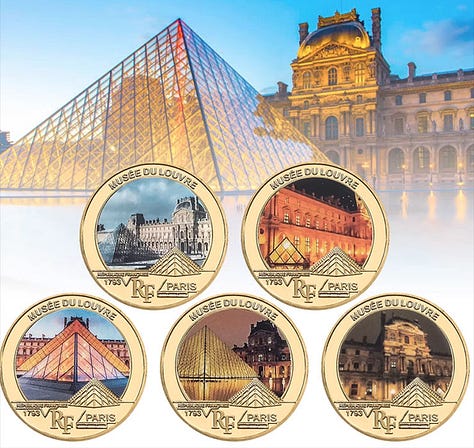
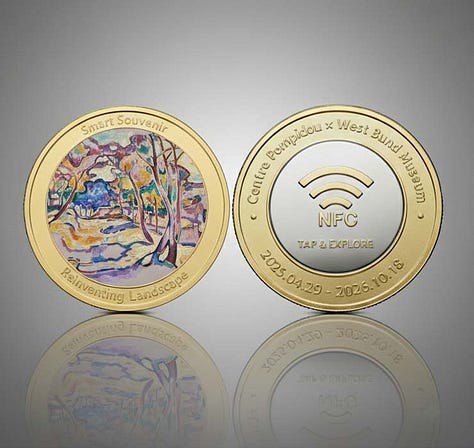
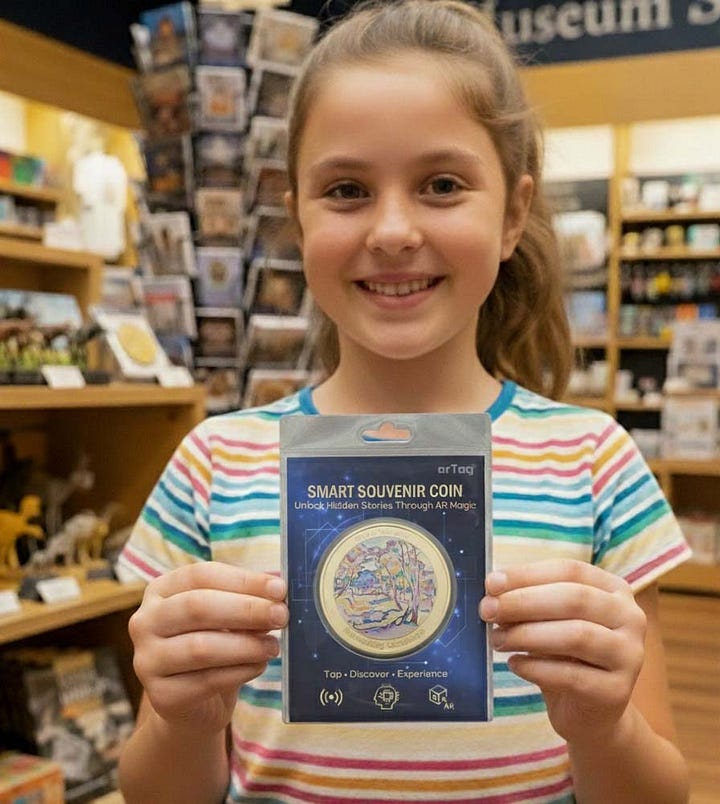
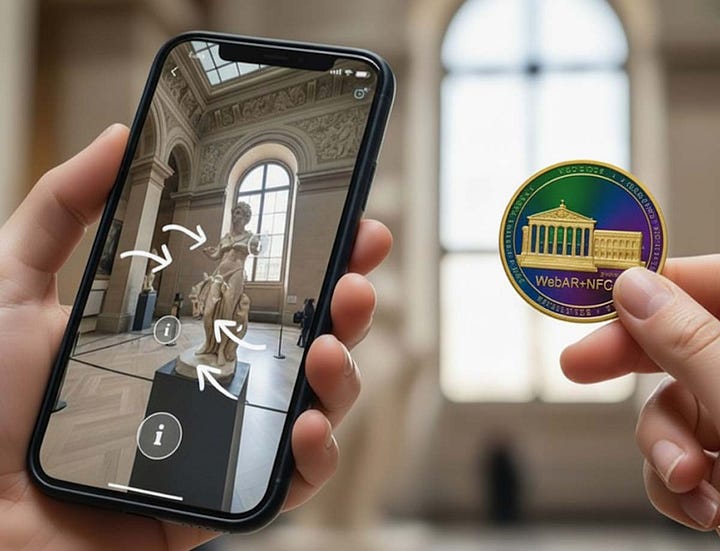
Offer your visitors a deeper connection and extend engagement long after their visit with arTag Smart Souvenirs. As a museum, gallery, or independent artist, you can transform your exhibitions into lasting, interactive experiences. Our elegant AR coins act as a direct channel to your audience, unlocking private content like artist interviews, curator talks, or hidden details when scanned. This innovative approach drives new revenue while creating a tangible, tech enhanced keepsake that keeps your art and brand in front of your audience. Elevate your visitor experience with arTag.
We’re Now Accepting Partners! Start Earning Commissions Today!
Do you have connections in the art industry? Join our Partner Program and earn generous commissions by introducing innovative Smart Souvenir technology . You connect us with museums, galleries, and artists seeking deeper audience engagement, and we provide a seamless, high-value solution. It’s a powerful opportunity to generate a recurring revenue stream. Learn more and apply here.
3. Deepening Community Ties: The Membership Evolution
The traditional membership model often offers little more than free entry. The future lies in creating a sense of genuine community and belonging, which fosters more durable support.
Tiered and Experiential Memberships: Move beyond “Individual” and “Family” levels. Create tiers like “Young Patron” with exclusive social events, “Curator’s Circle” with collection study opportunities, or “Community Champion” focused on supporting specific education programs. Each tier should offer unique experiences, not just more free tickets.
Pay-What-You-Can and Community-Supported Models: Introduce a flexible membership option to lower barriers to entry and build a more inclusive supporter base. Similarly, consider a “Community-Supported Art” model, inspired by agriculture’s CSA, where members receive a seasonal “share” of limited-edition prints or objects from artists-in-residence.
Focus on Lifetime Value: Shift the focus from simply acquiring new members to retaining existing ones. Implement robust member-engagement strategies: regular “member-only” updates from the director, sneak peeks of future exhibitions, and special recognition. A loyal, long-term member is far more valuable than a one-year sign-up.
4. Forging Strategic Partnerships
Look beyond the arts sector for partnerships that offer mutual benefit. Corporate partners are not just checkbooks; they are potential collaborators with resources, expertise, and audiences.
Beyond Sponsorship to Collaboration: Instead of simply asking for sponsorship for an exhibition, propose a co-created program. A tech company might partner on an interactive digital installation. A local brewery could create a special beer for an exhibition, with a portion of sales supporting your programs.
Cause-Related Marketing: Partner with a business that will donate a percentage of its sales over a specific period to your institution. This incentivizes the business to promote the partnership to its customer base, effectively marketing your institution to a new audience.
In-Kind Support: Revenue isn’t always cash. Proactively seek in-kind partnerships for things you need: a law firm for pro-bono legal counsel, an IT company for tech support, or a marketing agency for a rebranding project. This frees up cash for other critical areas.
5. Building Long-Term Stability: Endowments and Investments
While active revenue streams are essential, long-term health requires a foundation of financial capital.
The Power of the Endowment: An endowment is a permanent fund where the principal is invested, and the institution spends only a small percentage of the earnings each year. This provides a predictable, perpetual source of income. Launch a dedicated endowment campaign, focusing on legacy gifts and major donors interested in your institution’s century-long future.
Social Enterprise Models: Could your institution run a revenue-generating business that also fulfills its mission? Examples include a conservation lab that takes on private work, a café that sources from local farms and hosts community meetings, or a framing shop staffed by art students.
Sponsored by Art8 “Webinars for Creatives”
A Cultural Shift
Diversifying revenue is more than a financial strategy; it requires a cultural shift within the institution. It demands creativity, entrepreneurial thinking, and a willingness to experiment. It means every staff member, from curators to educators, can be an ideas-generator for sustainability. By building a multi-faceted revenue model, art institutions can reduce their vulnerability, deepen their community impact, and secure the resources needed to fearlessly champion the arts for generations to come. The goal is not just to survive, but to thrive.
Share your experiences with diversifying revenue streams in your institution in the comments below!
Discover the World’s Top Art Institutes at https://artinstitutes.org



